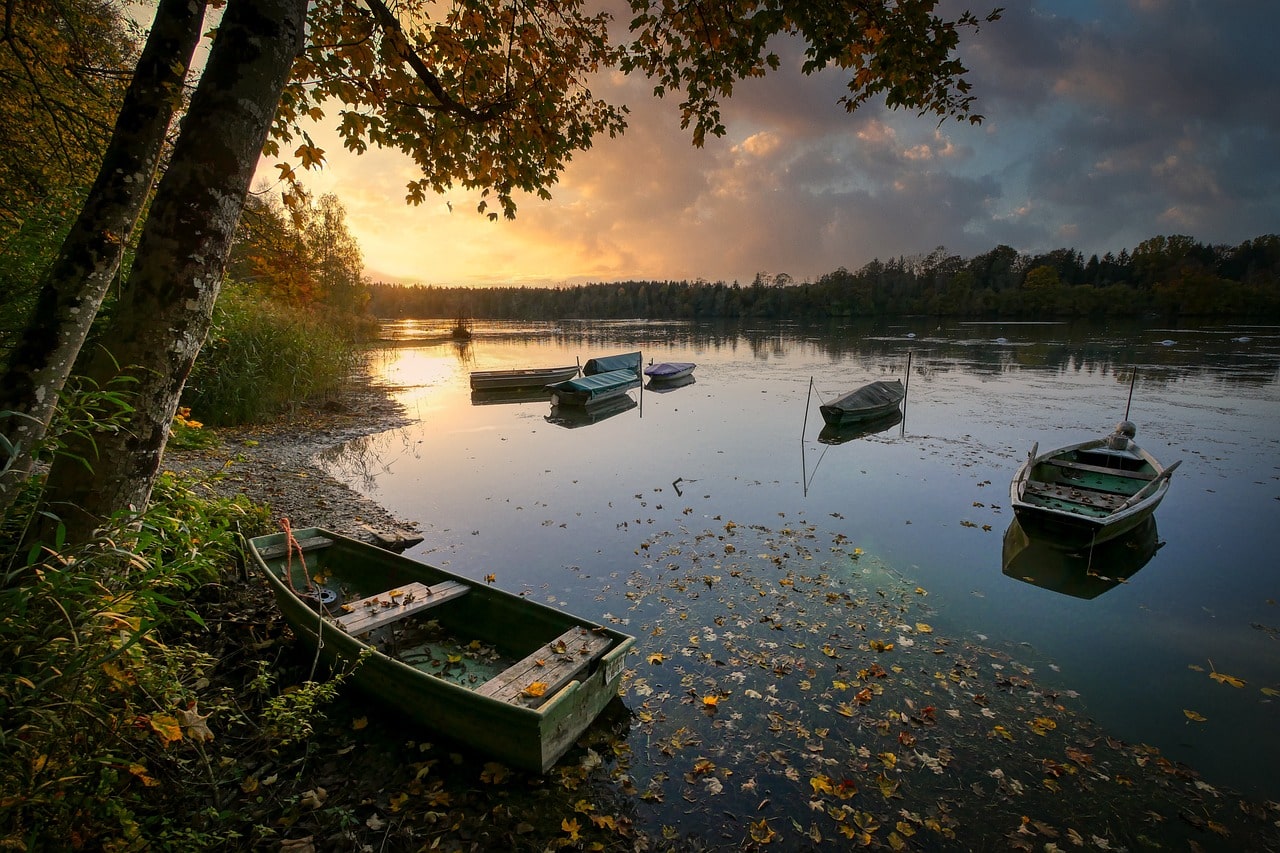Just seven miles southeast of Zurich sits the picturesque Lake Greifensee, a beloved refuge for those looking for a quiet get-away from the busy metropolis. Nestled in the canton of Zurich, Lake Greifensee has managed to preserve its pristine beauty, evading urban sprawl and maintaining its natural allure thanks to the protected shoreline. Access to the shores is restricted to a handful of public spots, ensuring an almost unbroken expanse of untouched landscapes. The waterfront is safeguarded as a nature reserve, harboring over 400 plant species and 120 migratory bird varieties amid the marshes and reed beds. Along the numerous trails that wind through the reserve, one can discover picturesque lake-viewing areas and inviting spots for a refreshing swim. The safeguarded status of the lake does not hinder holiday-goers from enjoying its waters. Multiple resort hotels, camping grounds, and boat launch sites make Lake Greifensee a popular hub for engaging in various water sports activities. Sailing enthusiasts, in particular, flock to the lake, with several sailing clubs calling it home. These clubs offer sailing instruction and coordinate regular racing events for their members. Swimming, canoeing, kayaking, diving, rowing, and wind-surfing are also prevalent on Lake Greifensee. Fishing permits are obtainable daily, albeit with regulations on fishing zones and fish species. Aspiring anglers must consult local authorities for proper permitting before embarking on a fishing excursion. For those seeking a stroll, the paved pathways encircling Lake Greifensee are popular among inline skaters, who converge to skate around the lake. Other visitors relish exploring the vast walking and cycling networks within the nature reserve and along the hills separating Lake Greifensee from Lake Zurich. Known as the Pfannenstiel, this pastoral Swiss countryside is an ideal locale for mountain biking, with roads meandering through verdant fields punctuated by quaint farmsteads and hamlets where a savory meal can be enjoyed. From day-trippers to extended holidaymakers, people flock to Lake Greifensee to bask in the sun and revel in the stunning scenery. Upon arriving at Lake Greifensee, visitors can leave their cars behind and ferry their bicycles aboard one of the many cruise vessels that traverse the lake. These boats transport between shore stops, allowing passengers to explore distant sections of the trail network without enduring a long initial trek. Various cruise itineraries cater to culinary delights, while some focus on sightseeing. The ‘Grief,’ Switzerland’s oldest steamship dating back to 1895, is operational on the lake after refurbishment in the 1980s. These vessels provide water transport to docking points near towns lining the lakeshore. Nestled along the lakeshore is the historic town of Greifensee, home to the grand Greifensee Castle. Erected in the 13th century, the castle once housed the Counts of Rapperswil and later the Counts of Toggenburg. It also served as the residence and administrative center for the Bailiff of Zurich. After changing hands multiple times, the castle was restored in 1995 and transformed into a cultural hub for Greifensee. A 15th-century triangular church adjoining the castle is popular for exchanging vows. Greifensee boasts many amenities for holidaymakers, with charming shops and eateries set amidst an authentic medieval ambiance. The town holds an annual semi-marathon, the Greifensee-Lauf, around the lake, drawing participants yearly. Numerous lodging options, including hotels, guesthouses, and bed-and-breakfasts, are available along the lakeshore. Nearby, the city of Uster offers larger cultural venues and artistic events, which are easily accessible by train from Greifensee. Surrounding villages proffer diverse holiday accommodations, from cozy chalets to stately chateaus and well-equipped campgrounds tailored to every visitor’s preference. Fed by the Aabach River, Lake Greifensee is drained by the Glatt River, a tributary of the Rhine. The Glatt River underwent diversion and channelization from the 1500s onwards, owing to the fertile Glatt Valley, resulting in excess nutrient runoff and prolonged pollution. Recent conservation endeavors have significantly enhanced water quality, rendering the Glatt River a scenic waterway teeming with wildlife. The lake took shape as the receding glacier left its mark on the terrain. Signs of ancient settlement near the north end of the lake date back to as early as 4000 BC. In 1975, recreational divers stumbled upon a Neolithic stilt village submerged near the northern shore. Subsequent underwater excavations unveiled traces of a village entailing 24 huts, along with an array of artifacts such as intricately decorated pottery, clay-made weaving spindles, bronze tools, needles, fishing hooks, and remnants of charred wild fruits and grains. An examination of well-preserved timber revealed a timeline stretching back to 1051 B.C. For tourists in Zurich, a brief train ride to Lake Greifensee promises a delightful afternoon escapade. Even business travelers in Zurich are lured to the lake’s cool waters for a leisurely dip and a relaxing stroll through the nature reserve. Accommodation options by the lake are abundant and diverse; however, securing real estate might be a bit more challenging. Regardless of the duration of your stay, a visit to Lake Greifensee guarantees a memorable experience. Embrace the tranquility and beauty of Lake Greifensee – a place that will beckon you to return time and again.

